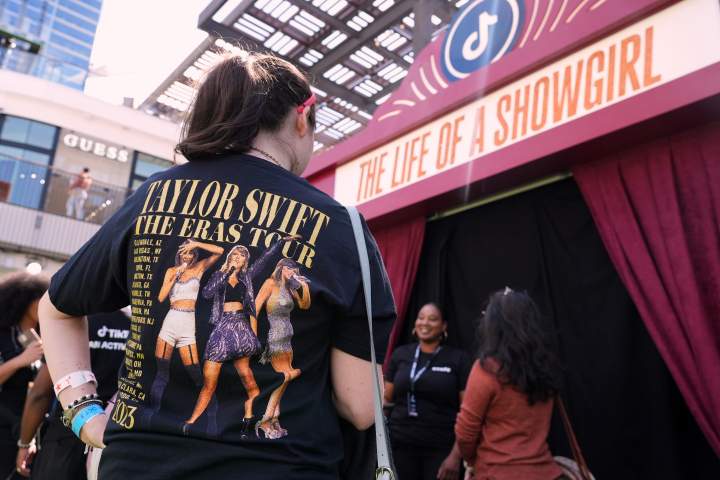Top Stories
Streaming Revolution Shifts Music Landscape Beyond ‘Mainstream’

BREAKING: The definition of “mainstream music” is rapidly evolving as the music industry grapples with the impact of streaming and social media. Just this summer, bands like My Chemical Romance and The Lumineers have shattered traditional notions of mass appeal, performing to sold-out stadiums and arenas, underscoring a shift toward niche audiences.
In a striking example, My Chemical Romance averaged 42,797 attendees per show during their recent reunion tour, achieving a 100% sellout rate. Meanwhile, The Lumineers grossed close to $2 million per show over seven performances, drawing an average of 18,430 fans each night. This surge in attendance reflects a dramatic departure from the past, where a few artists dominated the charts and radio airplay.
The music landscape has transformed since the early 2000s, when access to music was primarily controlled by record labels and mainstream channels. Now, with streaming algorithms curating personalized experiences, the concept of a singular “mainstream” audience has become obsolete. Today, music lovers thrive in their unique bubbles, each with distinct tastes and recommendations.
Even Taylor Swift, one of the biggest stars today, no longer enjoys the omnipresence of artists from decades past. To test this, ask a random person to name three Swift songs—chances are they won’t be able to without being a fan. This shift is further evidenced by the lack of a clear “song of the summer” for 2025, highlighting the fragmentation of musical consensus among fans.
Pollstar, the authoritative voice in the touring industry, reveals that even traditionally ridiculed acts like Creed are selling out shows with 11,000 attendees on average, raking in close to $1 million nightly. Such numbers challenge the conventional wisdom of what constitutes a mainstream artist today.
This transformation isn’t merely nostalgic lamentation; it points to how the industry is adapting. Major labels are still struggling to navigate the new landscape, while indie labels are leveraging social media and digital platforms to build dedicated communities. Artists can now cultivate devoted followings by engaging directly with fans, leading to sustainable income streams through subscriptions and exclusive content.
The emergence of “superfan” constituencies is changing the game. For instance, an artist convincing just 3,000 fans to pay $10 a month can generate $360,000 annually. This model emphasizes quality over quantity, allowing artists to thrive outside traditional definitions of success.
As the music industry continues to evolve, the significance of shared experiences diminishes. The communal listening culture that once defined what it meant to be a music fan has fragmented, leading to a more personalized, albeit isolating, experience.
In the midst of this upheaval, artists like Jehnny Beth are making waves. Her new album, You Heartbreaker You, is receiving critical acclaim, proving that while mainstream may be a thing of the past, impactful music still resonates deeply with audiences.
As we witness these changes unfold, the music industry’s ability to adapt will determine the future of not just the artists, but also the fans who cherish their music. Stay tuned for more updates on how the music landscape continues to evolve in this digital age.
-

 World3 months ago
World3 months agoScientists Unearth Ancient Antarctic Ice to Unlock Climate Secrets
-

 Entertainment3 months ago
Entertainment3 months agoTrump and McCormick to Announce $70 Billion Energy Investments
-

 Lifestyle3 months ago
Lifestyle3 months agoTransLink Launches Food Truck Program to Boost Revenue in Vancouver
-

 Science3 months ago
Science3 months agoFour Astronauts Return to Earth After International Space Station Mission
-

 Technology2 months ago
Technology2 months agoApple Notes Enhances Functionality with Markdown Support in macOS 26
-

 Top Stories2 weeks ago
Top Stories2 weeks agoUrgent Update: Fatal Crash on Highway 99 Claims Life of Pitt Meadows Man
-

 Sports3 months ago
Sports3 months agoSearch Underway for Missing Hunter Amid Hokkaido Bear Emergency
-

 Politics3 months ago
Politics3 months agoUkrainian Tennis Star Elina Svitolina Faces Death Threats Online
-

 Technology3 months ago
Technology3 months agoFrosthaven Launches Early Access on July 31, 2025
-

 Politics3 months ago
Politics3 months agoCarney Engages First Nations Leaders at Development Law Summit
-

 Entertainment3 months ago
Entertainment3 months agoCalgary Theatre Troupe Revives Magic at Winnipeg Fringe Festival
-

 Politics2 weeks ago
Politics2 weeks agoShutdown Reflects Democratic Struggles Amid Economic Concerns

















